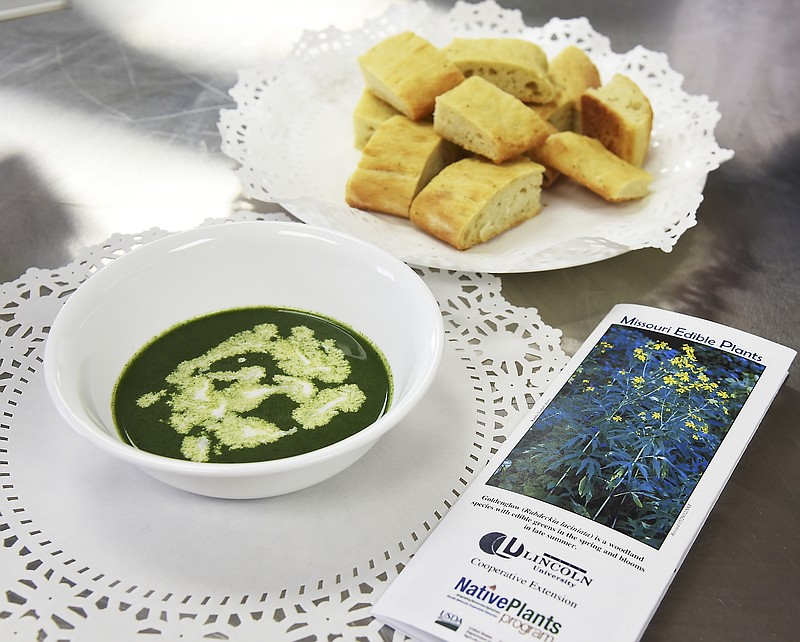Anyone who has walked through a patch of stinging nettles in shorts can be excused for doubting if they are edible. The good news - once the itching and stinging has faded away - is the answer is yes, if you know how to gather and prepare them before eating them.
Nettles are not only tasty but very nutritious and can be used in recipes that call for spinach. They are high in vitamins A and C and minerals like calcium, manganese, phosphorus and iron. In Missouri, we have three nettles to choose from: two natives and one introduced. Oddly enough, the most popular is stinging nettle, which is native to Europe, but it is so widespread that it has naturalized in Missouri bottomlands. Some call this kind of encounter a crash course on plant identification and contact dermatitis!
Nettles can be found growing in woodlands with rich soil under deep shade. They are easy to grow in gardens and spread from underground stems. A good spot in your yard would be moist and shady with fertile soil, but it is a good idea to grow them contained or away from a garden. However, in the wild these plants are so common it is acceptable to forage them and harvest big quantities.
According to Ben Charles Harris, author of "Eat the Weeds," nettles can replace spinach in recipes. Leaves can be cooked quickly for two or three minutes with very little water and make an excellent green vegetable.
At the Lincoln University Commercial Kitchen, we cook the leaves for no more than three minutes in boiling water then immediately place them on a bed of ice to blanch them. Leaves can then be used immediately in recipes or frozen for later use.
The two most common species of nettle are our native wood nettle (Laportea canadensis) and the non-native but naturalized stinging nettle (Urtica dioica). Both grow in similar habitat and are usually found growing together with woodland wildflowers like sweet William and edible wild leeks. Wood nettle has fewer stinging hairs than stinging nettle. False nettle (Boehmeria cylindrica) with no stinging hairs is also edible but is less common.
The best time to collect nettles is in spring when plants are 6-8 inches tall. In early spring you can gather the tips of plants. If you do that often and harvest them as they grow back, you will have fresh tips all through spring. Young plants are the most appetizing because they become fibrous and tough with age.
Be sure to wear gloves to gather nettles; otherwise you may regret it! Harvest them right and don't let them bite, and enjoy another one of nature's wonderful gifts - tasty, nutritious and free!
Nadia Navarrete-Tindall is an associate professor and native plant specialist for the Lincoln University Cooperative Extension. The Native Plants Program provides educational tools to students and the public on how to identify, grow and market native edible plants and those that are important to pollinators.
Nettles Soup
Serves four.
Ingredients:
1 tablespoon olive oil
1 carrot, peeled and diced
9 wild leeks, white part only, washed and sliced
1 large potato, peeled and sliced
8 cups vegetable stock
4 cups blanched nettles
teaspoon salt
teaspoon pepper
cup heavy cream (optional)
Directions: In a large pot over medium heat, warm the olive oil. Add the carrot, wild leeks and potato, and cook until soft. Add the stock, bring to a boil, then reduce heat to a simmer and add the nettles. Cook for 15 minutes. Remove from heat. With a blender, mix the soup until very smooth. Return to pot and season with salt and pepper. Stir in the sour cream. Serve hot.
Nettle Tartlets with Ricotta
Makes 12 to 18 small tartlets.
Ingredients:
1 cup blanched nettle greens
2 eggs, beaten
1 cup ricotta cheese
2 tablespoons plain yogurt
6 tablespoons Parmesan cheese, grated
1 small red pepper
Salt and pepper
Mini phyllo cups
Directions: Beat together the eggs, ricotta, yogurt and Parmesan cheese. Season with salt and pepper. Stir in the blanched nettles and pour into the mini phyllo cups. Bake at 350 degrees for 25 minutes. Garnish with minced red pepper. Serve warm or cold.


